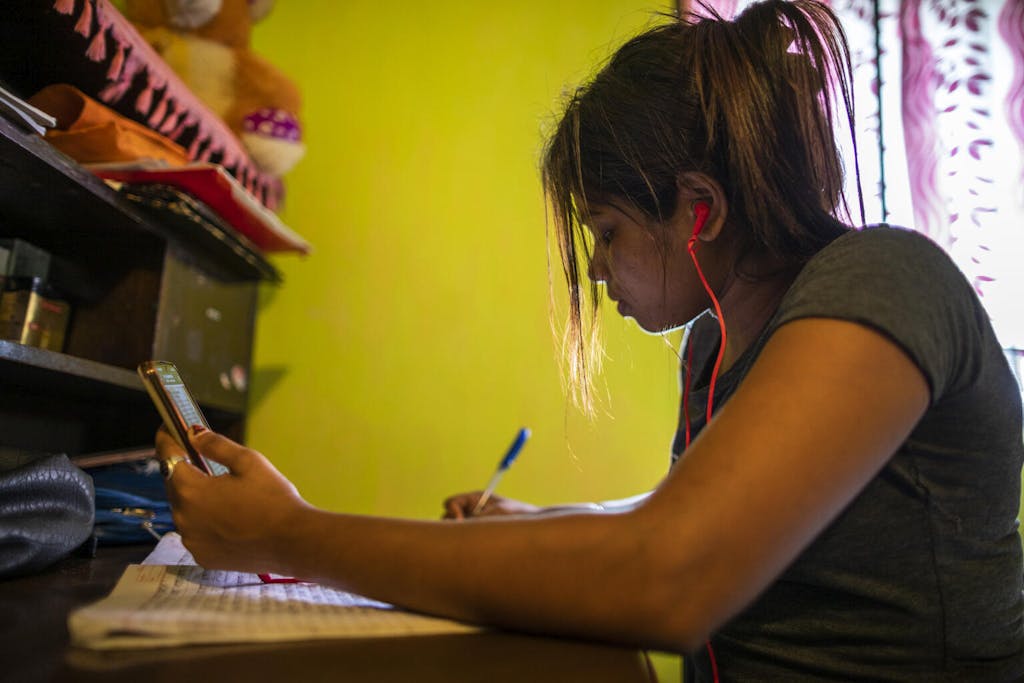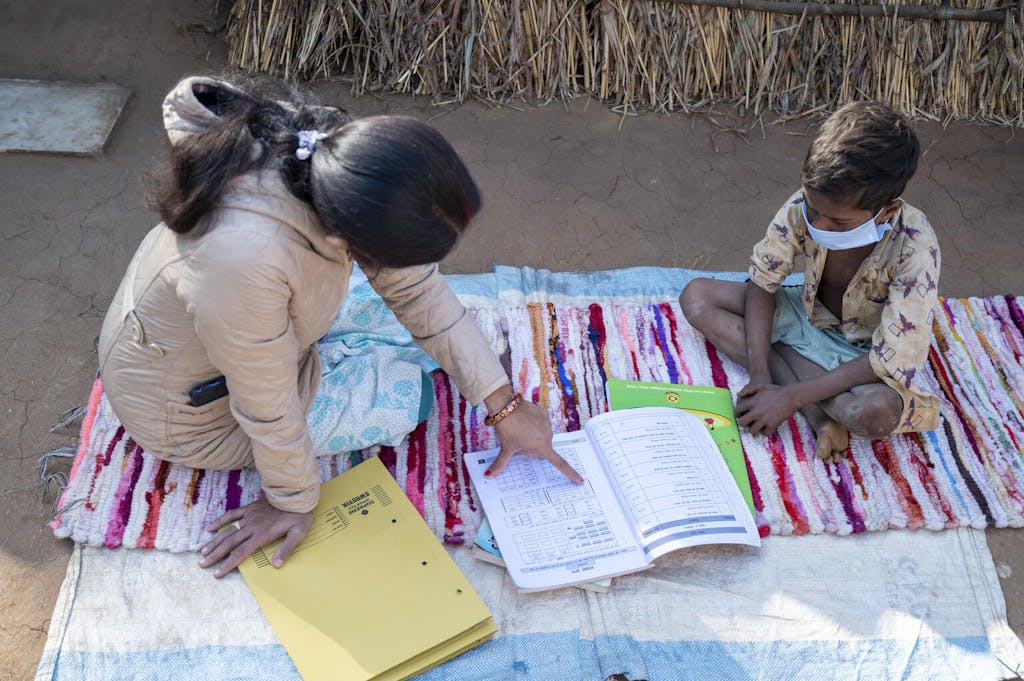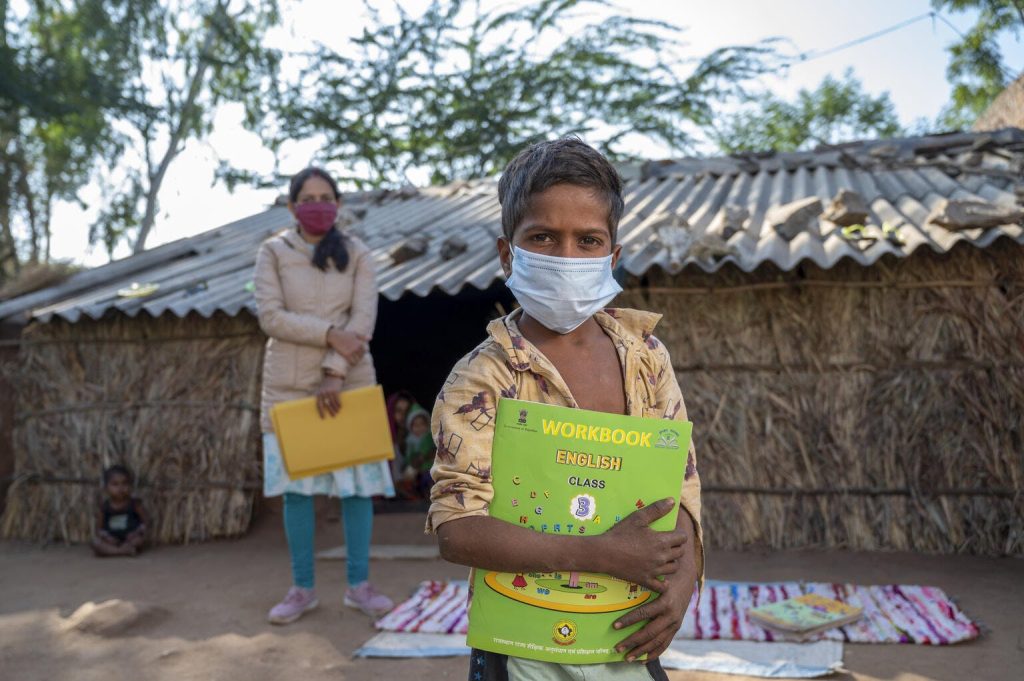“In our school, on-line packages started in March 2020, however i started attending them solely in August. i did not know packages had started,” says Nidhi, a highschool pupil from a women-solely public school in southeast Delhi.
one other pupil, Chandan, in the end found with reference to the web packages after a classmate handed alongside his cellphone quantity to the teacher. solely then was Chandan included inside the chat group the place his teachers had been sharing every part associated to on-line packages. final September he started studying as quickly as extra, virtually 5 months after his school had launched the web platform.
each Nidhi and Chandan misplaced priceless months of studying. Their tales exemplify a rising hole in India between youngsters who’ve entry to on-line packages and people who don’t.
The problem of reaching every pupil
Our latest survey with the Centre for price range and Governance Accountability (CBGA) examined the expertise of youngsters attending secondary training in authorities and authorities-aided faculties in Delhi as a outcome of the start of the pandemic in 2020.

As a precaution in opposition to the unfold of COVID-19, the federal authorities of Delhi suspended in-particular person packages in all faculties starting April 1, 2020. inside the foremost communication on school closure and on-line packages, the Delhi Directorate of training additionally developed a plan to implement distant studying actions. the information expertise (IT) department of the federal authorities was tasked with reaching college students by SMS textual content material messages and sharing particulars about on-line packages.
one other Delhi authorities round issued in July 2020 instructed all authorities and authorities-aided school principals to disseminate information on school closure and on-line packages. It was to be despatched to educating and nonteaching workers, dad and mom, and college students by members of the school administration Committee, mass or particular person SMS amenities, cellphone calls, and the like.
however contacting the estimated 320 million school-aged youngsters in India — definitely one of many largest populations of youths on this planet — is an enormous enterprise.
And as our survey uncovered, many youngsters, collectively with Nidhi and Chandan, weren’t reached.
Difficulties switching from in-particular person to on-line
inside the shared bodily space of faculties, teachers and college students are naturally related. Pupils preserve inside the loop of developments regarding their curriculum, class logistics, extracurricular actions, and something they want to know. they will on an everyday basis attain out to their friends, pals, or teachers for any information they missed. however what occurs when the bodily space is now not accessible and all communication strikes on-line?
From our interplay with college students, it seems that evidently there was no devoted web web site or helpline accessible to current them with the needed information. in lots of cases, WhatsApp teams had been reported to be the one approach of communication. nobody-on-one interplay was accessible. In some cases, teachers sought the assist of the class consultant to coordinate with college students.

WhatsApp teams additionally remained inaccessible to many college students who didn’t have passable entry to a cellphone, as revealed in our survey. in lots of cases, the dad or mum who owns the cellphone wants it for work. That signifies that pupils have entry solely inside the mornings or evenings. One baby reported that he wished to go to his aunt’s residence at evening time, which was pretty faraway from his personal residence, to make the most of her cellphone. therefore, he typically missed communications from his teachers.
inventive alternate options to attain pupils
These anecdotes reveal that there is not any full digital infrastructure in place. inside the absence of entry to devices and web connectivity, fully different decisions have emerged. tv, radio, SMS, interactive voice-primarily based communication, and even door-to-door contact are a quantity of examples. State governments and nongovernmental organizations (NGOs) have tried these alternate options with various levels of success. In the Jhabua district of Madhya Pradesh, teachers held open-air packages after going door-to-door to ask college students when COVID-19 receded. teachers in Chhattisgarh tried “loudspeaker faculties” and Bluetooth-enabled audio classes by straightforward telephones.

The experiences current that education all by a pandemic can not rely upon a single communication channel. It takes a inventive combination of extreme-tech, low-tech, and even “no-tech” approaches to retain every baby inside the complete public training system.
Even earlier than the pandemic, there was worldwide concern with reference to the rising digital divide and so-referred to as studying poverty that weak youngsters, particularly women, are going by. In gentle of that, UN Secretary-widespread António Guterres launched the foremost-ever Roadmap for Digital Cooperation final 12 months to deal with this widening, worldwide hole.
however COVID-19 has solely worsened the state of affairs. The United Nations youngsters’s Fund (UNICEF) found that some 168 million youngsters throughout the globe misplaced a 12 months of education in 2020 as a outcome of of this of shutdowns.
What our examine revealed is that, on account of the pandemic, a scarcity of entry to digital expertise has become the most pressing hurdle to beat shut to educating India’s youngsters. till faculties open, with out quick movement, the implications for the youngsters’s properly-being and future might very properly be devastating.
Protiva Kundu leads evaluation on authorities financing of training at Centre for price range and Governance Accountability (CBGA).
Shruti Ambast joined CBGA as a coverage Analyst from September 2019. She is at present engaged on factors with public finance inside the weight loss plan sector.
This story was supplied by Southern Voice, a community of assume tanks in Africa, Latin America, and Asia that amplifies native information and evaluation in assist of the Sustainable enchancment goals (SDGs). The UN basis companions with Southern Voice to focus on native SDG tales from all by the world.

